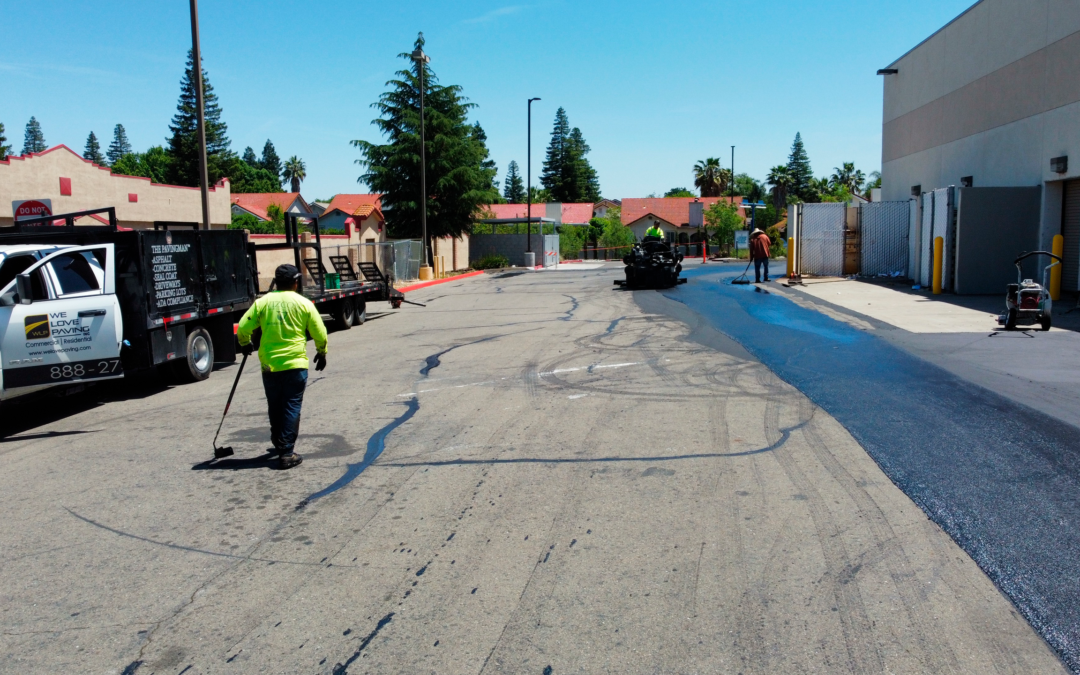Choosing the right thickness for asphalt paving is crucial for the longevity and durability of the surface, whether it’s a driveway, parking lot, or roadway. The thickness of asphalt paving affects its ability to withstand traffic loads, weather conditions, and overall wear and tear. This article will explore the factors influencing asphalt thickness and provide guidelines for different applications.
Introduction
- Importance of Proper Asphalt Thickness
- Durability and longevity of the pavement.
- Impact on maintenance and repair costs.
- Safety considerations for users.
- Types of Asphalt Paving Applications
- Residential driveways.
- Commercial parking lots.
- Public roadways and highways.
Factors Influencing Asphalt Thickness
- Traffic Load
- Definition of traffic load and its importance.
- Differences in traffic load for residential vs. commercial applications.
- Examples of heavy traffic areas requiring thicker asphalt.
- Subgrade Condition
- Explanation of the subgrade and its role in asphalt paving.
- Importance of a stable and well-prepared subgrade.
- Techniques for assessing and improving subgrade quality.
- Climate and Weather Conditions
- Impact of temperature fluctuations on asphalt performance.
- Effects of precipitation and drainage on asphalt integrity.
- Considerations for different climates (e.g., cold regions vs. hot regions).
Recommended Asphalt Thickness for Different Applications
- Residential Driveways
- Typical thickness range (2-3 inches).
- Factors that may require thicker asphalt (e.g., large vehicles, poor subgrade).
- Commercial Parking Lots
- Standard thickness (4-6 inches).
- Adjustments based on expected traffic volume and vehicle types.
- Importance of proper design and layout.
- Public Roadways and Highways
- Thickness requirements for different types of roads (local streets vs. highways).
- Role of federal and state guidelines in determining thickness.
- Examples of thickness specifications from various transportation authorities.
Asphalt Paving Layers
- Base Layer
- Description and purpose of the base layer.
- Common materials used (e.g., crushed stone, gravel).
- Recommended thickness for the base layer.
- Binder Layer
- Function of the binder layer in asphalt paving.
- Typical materials and their properties.
- Thickness recommendations for optimal performance.
- Surface Layer
- Importance of the surface layer for smoothness and durability.
- Materials used in the surface layer (e.g., fine aggregate, bitumen).
- Suggested thickness for different applications.
Installation and Compaction
- Proper Installation Techniques
- Importance of hiring experienced contractors.
- Key steps in the asphalt paving process.
- Common mistakes to avoid during installation.
- Compaction and Its Role in Asphalt Performance
- Explanation of compaction and its benefits.
- Equipment used for compaction (e.g., rollers).
- Ideal compaction practices to achieve desired thickness and density.
Maintenance and Longevity
- Regular Maintenance Practices
- Importance of routine inspections and repairs.
- Common maintenance tasks (e.g., sealing cracks, patching potholes).
- Tips for extending the life of asphalt pavement.
- Signs of Asphalt Deterioration
- Indicators that your asphalt may need repair or replacement.
- Effects of inadequate thickness on pavement performance.
- When to consider resurfacing or full replacement.
Case Studies and Expert Opinions
- Real-life Examples
- Success stories of properly installed asphalt pavements.
- Challenges faced due to incorrect thickness and how they were resolved.
- Insights from Industry Experts
- Recommendations from asphalt paving professionals.
- Common questions and answers about asphalt thickness.
Conclusion
Determining the correct thickness for asphalt paving is essential for ensuring a durable and long-lasting surface. By considering factors such as traffic load, subgrade condition, and climate, you can make informed decisions for various applications. Proper installation, compaction, and regular maintenance further contribute to the performance and longevity of asphalt pavement. Always consult with experienced contractors and follow industry guidelines to achieve the best results.

